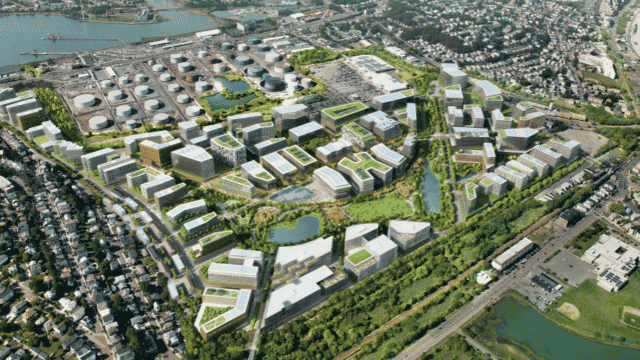
Developers of the 161-acre Suffolk Downs site say they cannot afford to add more affordable units to the 10,000-unit project.
From Boston City Councilor Lydia Edwards’ perspective, the worst outcome for the redevelopment of the 161-acre Suffolk Downs property would be a finished product that resembles the Seaport District.
As the Boston Planning and Development Agency reviews a proposed 16.1-million-square-foot development proposal for Suffolk Downs, including 10,000 housing units, Edwards warns that the property has the potential to become an economically and ethnically homogeneous enclave with little connection to the existing neighborhood. The District 1 councilor is asking the BPDA to require more units for lower-income households, to stem displacement as East Boston apartment-dwellers are pushed out by rising rents and condominium conversions.
“Everything is on the table,” Edwards said. “I just want to see a commitment higher than the minimums, which is where we are right now, and negotiated in a transparent way before the BPDA votes up or down.”
HYM Managing Partner Thomas O’Brien noted that the development – expected to take 15 to 20 years to build out – would generate 930 affordable units, the most of any single development since Boston enacted its inclusionary development policy in 2000. O’Brien said the current affordable unit income and rent guidelines are necessary to make the development profitable, given an estimated cost of $500,000 to construct each residential unit.
“Our intention is to try to build these on a union basis,” O’Brien said. “That’s who we are as a company, and we’re working with the unions so they hopefully give some flexibility to build these on a cost-effective basis.”
Identify New Prospects with Targeted Marketing Lists
Property owners are a prime target market for insurance, banks, real estate, home improvement, investment, and most retail and home service businesses. With information on more than 130 million households – encompassing 94 percent of the U.S. population – we invite you to learn more about how The Warren Group’s Targeted Marketing Lists can generate more quality business leads to develop your business.
HYM is in talks with building trades representatives on a project labor agreement for the development and is optimistic that one will be reached, O’Brien said. HYM and its financial backer, family office Cathexis Holdings (see sidebar), also estimate costs of over $80 million for common area amenities and open space, over $190 million for on-site infrastructure and over $50 million for off-site roadway projects.

HYM Investment Group’s plans for 10,000 housing units on the Suffolk Downs property would include 930 on-site affordable units, all on the East Boston side of the 161-acre property.
Councilor Targets Income Guidelines
Boston’s inclusionary development policy requires multifamily developers to set aside a minimum 13 percent of a project’s housing units for households earning below the area median income.
The policy, created by a mayoral executive order, is designed to maximize affordable housing generation without making new construction economically unfeasible. It generated 546 new housing units in 2018, with another 2,119 under construction, according to a March report by city housing and development agencies.
Developers also can request BPDA approval to pay a cash-out fee, ranging from $200,000 to $380,000 per unit depending upon the neighborhood, into a fund that supports nearby affordable housing construction. But to gain approval for that option, developers must provide financial documents to the BPDA indicating they cannot afford to build the units on-site.
The policy sets income eligibility limits for the affordable units at a maximum of 70 percent of the area median income, which translates to $48,250 for an individual, or $68,950 for a family of four. In East Boston, the median household income is just under $53,000 and per-capita income is under $27,000, according to BPDA research.

Steve Adams
Given the disparity, it’s appropriate that Suffolk Downs reserve some of the IDP units for households earning 30 percent and 50 percent of the area median income, Edwards said. And she asked that the BPDA require a generous allocation of two- and three-bedroom units for families.
“The project filing does not indicate whether any units will be produced below 70 percent of the area median income. The BPDA has not separately indicated whether or how it will require units affordable to East Boston residents, minority residents of the city of Boston or families with children,” Edwards wrote in a public comment letter.
BPDA staff is reviewing all of the submissions received in the recent public comment period which expired May 31 before determining the next steps for the review, BPDA spokeswoman Bonnie McGilpin said.





